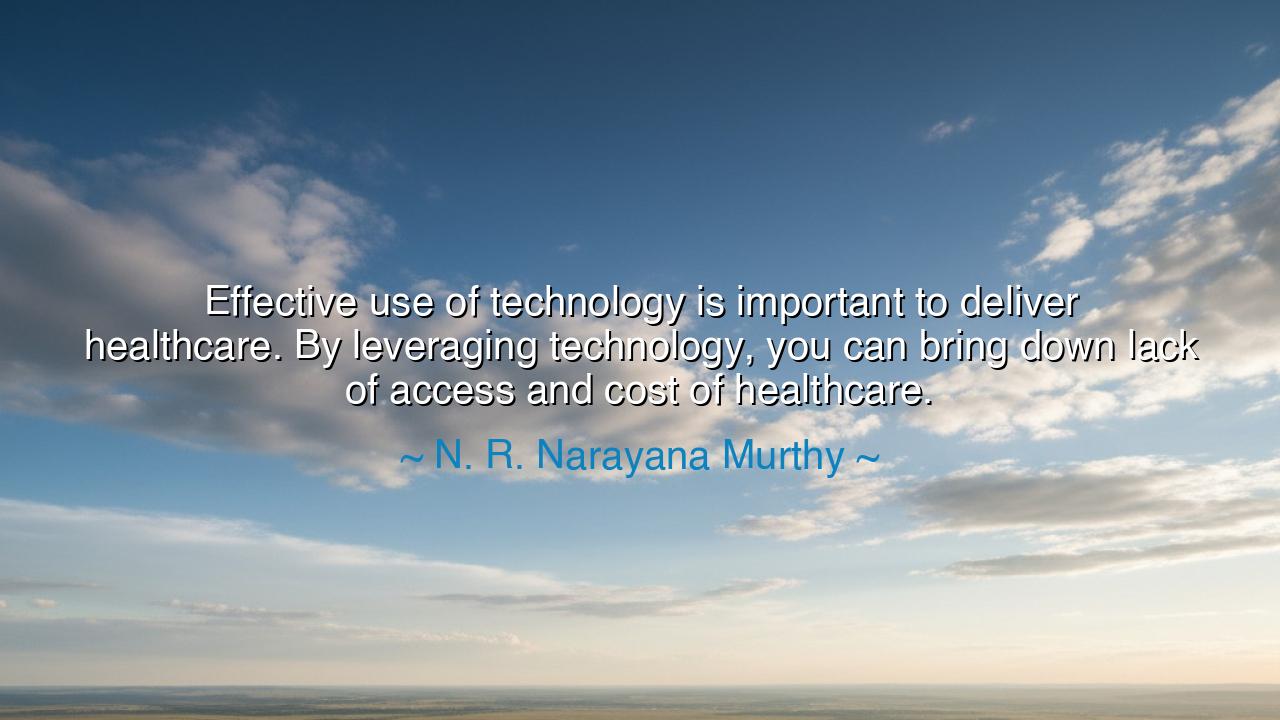
Effective use of technology is important to deliver healthcare.
Effective use of technology is important to deliver healthcare. By leveraging technology, you can bring down lack of access and cost of healthcare.






In the words of N. R. Narayana Murthy, visionary and builder of modern India’s technological foundations, there is a truth that rings with the gravity of both wisdom and compassion: “Effective use of technology is important to deliver healthcare. By leveraging technology, you can bring down lack of access and cost of healthcare.” These words, though seemingly practical, are in truth a call to arms—a reminder that human ingenuity, when guided by compassion, has the power to heal the body of society as surely as medicine heals the body of man.
At the heart of this declaration lies the recognition that healthcare is not merely a service but a right, one that must reach not only the wealthy in cities but also the poor in villages, the forgotten in deserts, and the isolated in mountains. Murthy, a man shaped by both hardship and vision, knew that the chains which bind healthcare are access and cost. Too often, even when medicine exists, it cannot reach those who need it most, or it arrives at a price too high for the suffering to bear.
Here enters the role of technology. Like fire in the hands of early man, it is neither good nor evil—it becomes what the wielder intends. To Murthy, it was the torch that could pierce the darkness of inequity. Telemedicine can bring doctors into distant villages without the need for travel. Digital records can reduce inefficiencies that drain resources. Mobile devices, carried in the hands of even the poor, can deliver information that saves lives. Thus, technology is not a luxury of modernity, but a weapon of mercy when turned toward the service of health.
History offers us an echo of this truth. Consider the story of Jonas Salk, who developed the polio vaccine. His genius was not only in the science, but in his refusal to patent the vaccine, ensuring it would spread freely across the world. In his time, it was not computers but laboratories that served as the technology of healing. And yet the principle is the same: when tools of knowledge are used wisely and made accessible, they reduce cost, increase access, and transform entire generations.
Murthy’s words also remind us of the balance between efficiency and humanity. Technology must not replace compassion but must amplify it. A machine can carry a signal across the world, but only the heart behind it ensures the signal carries healing and not harm. When healthcare systems embrace innovation not for profit alone, but for service, they embody the noblest purpose of both science and society.
The meaning of the quote is clear: the true power of technology lies not in novelty, but in service. The devices we build and the systems we design must bend toward justice, ensuring that no one is denied treatment because they are too poor, too remote, or too forgotten. To lower barriers of cost and access is to affirm the dignity of every human being, to say that their lives matter as much as those in towers of wealth or cities of power.
The lesson for us is both practical and profound: embrace technology, but always guide it with the compass of compassion. Innovators must ask not only “Can this be built?” but “Whom does this serve?” Citizens must demand systems that harness technology not only for efficiency, but for equality. And each of us, in our own sphere, must support the use of tools that make healthcare more accessible, more affordable, and more just.
So let Narayana Murthy’s words be carried forward as a legacy: that the measure of our progress is not in the brilliance of our inventions alone, but in how they heal the sick, comfort the suffering, and serve the least among us. For when technology bows to the service of humanity, it becomes more than machinery—it becomes compassion made visible, and justice made real.






AAdministratorAdministrator
Welcome, honored guests. Please leave a comment, we will respond soon